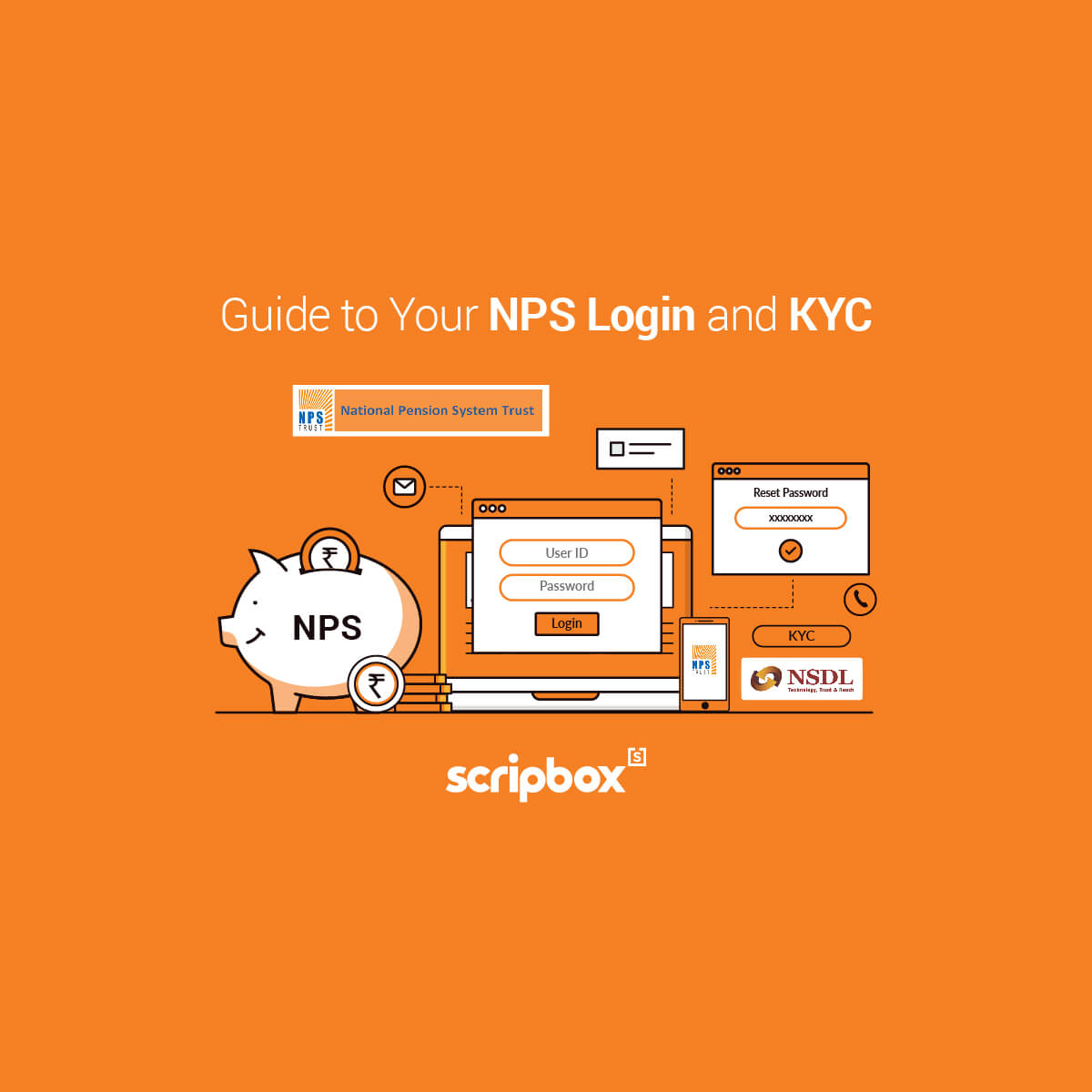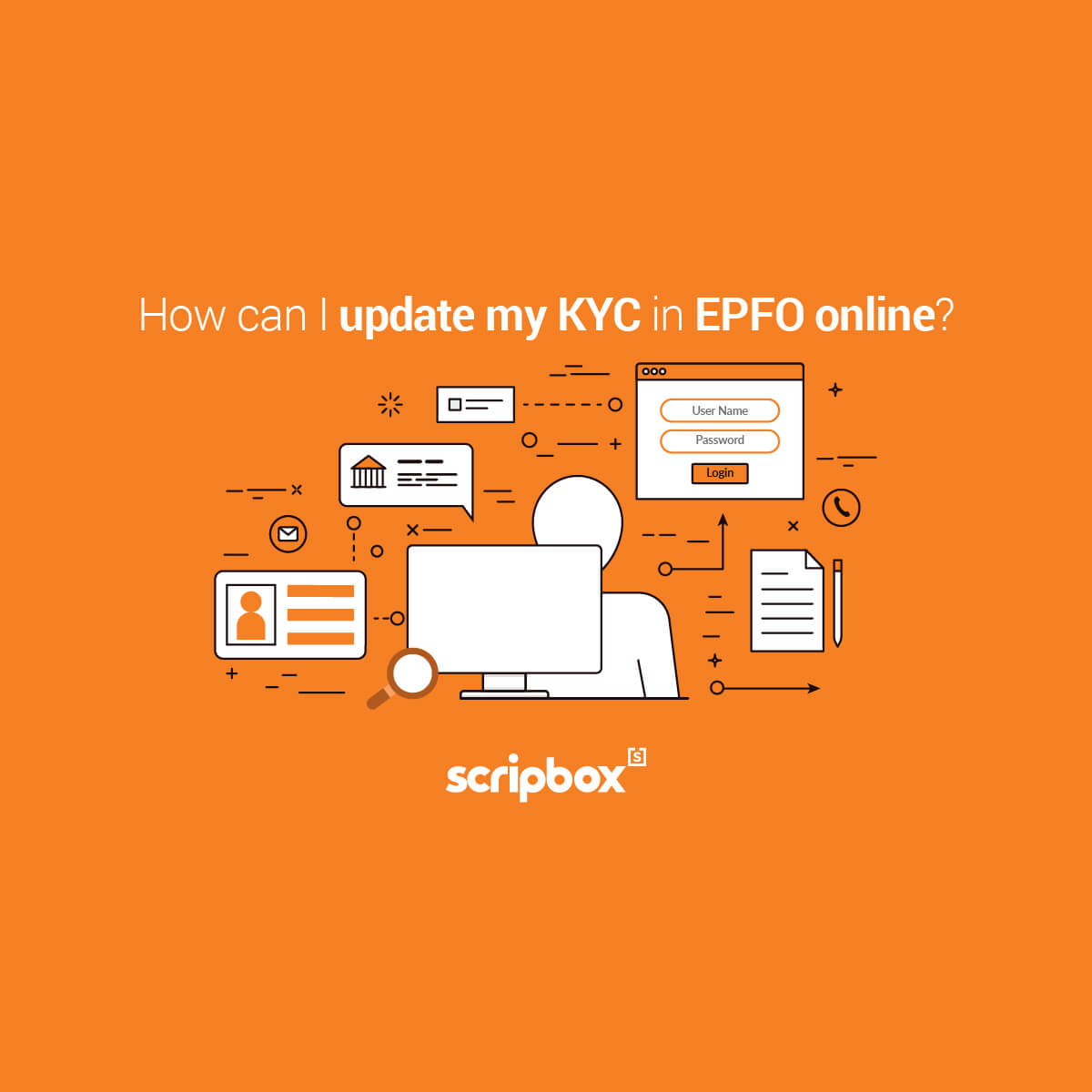The Public Provident Fund (PPF) and National Pension Scheme (NPS) are both launched to encourage savings and aid investors during retirement. Both offer similar tax benefits, are long term investments. Their similarity ends there. They are very different in terms of returns, tenure, lock-in period and maturity amount usage. In this article, we have covered the similarities and differences between them both. This article explains in detail NPS vs PPF.
What is PPF?
Public Provident Fund is a long term investment option. The Government of India backs PPF. The Public Provident Fund has a lock in period of 15 years. The minimum amount of investment is INR 500, and the maximum investment per annum is INR 1,50,000. Additionally, one can open a PPF account with just INR 100. Also, each individual can open only one PPF account.
To keep the account active, investors have to make a minimum deposit of INR 500 every year. In a scenario, where the investor fails to invest in a year, the account would become inactive. Also, during the inactive duration of the account, no interest is earned. Additionally, to activate the account, the investor has to pay INR 500 for every year the account was inactive. Furthermore, another INR 500 for the year they are activating the account.
Investments in Public Provident Fund are eligible for deductions under Section 80C of the Income Tax Act. Also, the investments fall under the Exempt – Exempt – Exempt (EEE) category. In other words, the investment, interest and redemption (maturity amount) are all tax exempted. Investments up to INR 1,50,000 per annum qualify for tax deductions under Section 80C of the Income Tax Act.
What is NPS?
National Pension Scheme (NPS) is a government launched pension plus investment scheme. Available to the citizens of India, it is a voluntary retirement plan. NPS is managed under the purview of Pension Fund Regulatory and Development Authority (PFRDA) and Central Government.
NPS contributions made by its subscribers are invested in market linked asset classes like equities and debt. The returns from NPS are hence market linked. The investment in NPS is locked-in until retirement.
All Indians citizens can invest in an NPS scheme. Also, all employees (organized and unorganized sector) can invest in this scheme. It encourages savings and investing in a better retirement. NPS allows investors to avail tax benefits on investments up to INR 2 lakhs under Section 80C and 80CCD of the Income Tax Act.
Upon retirement, 60% of the corpus can be withdrawn in a lump sum. The rest 40% has to be invested in an annuity to get monthly pensions for the time period chosen. Also, 60% is entirely tax-free in the hands of investors. The scheme also allows partial withdrawals up to 25% of the corpus. Also, one can opt-out of the scheme and get 20% of the corpus in a lump sum, and the rest 80% goes towards buying an annuity.
Similarities between NPS and PPF
Both NPS and PPF are long term investment plans suitable for retirement. Following are some similarities between both the plans:
Long term investment: Both NPS and PPF are long term investment options. These schemes have long term lock in period. To start investing in these schemes, the investors have to open an account.
Retirement Fund: NPS and PPF are investment options suitable for retirement. Their long lockin period helps in building a retirement savings fund. Hence investors looking to build a retirement fund can consider investing in either of the investment options.
Tax Benefits: Both NPS and PPF offer tax benefits for their investors. Investments into both the schemes qualify for tax exemption under Section 80C of the Income Tax Act. Also, the returns from both investments are tax-free. Additionally, the final corpus as well, doesn’t attract any tax. While filing income tax returns, the investors can declare their investments in any of the above schemes to avail tax benefit.
Differences between NPS and PPF
Though NPS and PPF are long term investment schemes, they are quite different in their offerings. The major difference between NPS and PPF is their tenure. Following are some of the differences between both the schemes.
Is NPS better than PPF? PPF vs NPS
| Parameter | National Pension Scheme | Public Provident Fund |
| Tenure | Till the age of 60 years can extend to the age of 70 years. | 15 years can extend by period of 5 years. |
| Minimum Investment | NR 6,000 | INR 500 per annum |
| Maximum Investment | No limit (should not exceed 10% of the investor’s salary or 10% of total gross income) | INR 1,50,000 per annum (maximum of 12 contributions per year) |
| Premature withdrawal | After completion of 10 years | Allows premature withdrawals |
| Choice of investment | Investors can decide where to invest the funds. | Investors do not get to decide where the investments. |
| Returns | 9.00% to 12.00% p.a. | 7.10% p.a. |
| Annuity | Use at least 40% of the total corpus to buy an annuity. | Investors are not required to buy an annuity. |
| Tax Benefits | INR 1,50,000 under Section 80C, INR 50,000 under Section 80CCD(2). | INR 1,50,000 under Section 80C |
Read also about the NPS vs SIP
Illustration of return under NPS and PPF
The returns for PPF are in the form of interest, and it is fixed. Investors receive this at the end of the year on March 31st each year. The interest rate for the current quarter is 7.10% p.a.. Returns for NPS are market linked. Historically NPS has given 9.00% to 12.00% p.a.. Interest on both NPS and PPF are calculated monthly. Let’s understand returns from NPS vs PPF with an example.
Ms Aakriti invests INR 5,000 per month in the PPF scheme, and she also invests the same in NPS scheme. Her rate of return for PPF is fixed at 7.1%. She expects her rate of return from NPS to be around 10%. Ms Aakriti is currently 30 years old. Also, she expects to retire at the age of 60.
After 15 years, her PPF investments would be worth INR 16,27,284. The investment is INR 9 lakhs and interest earned in INR 7,27,284. The entire return is tax free in the hands of investors.
By the time she is 60, her NPS investment would be INR 1.13 Cr. Her total investment is INR 18 lakhs. The interest earned is INR 95.02 lakhs. Ms Aakriti has to invest 40% in an annuity. That is INR 45.48 lakhs. The remaining 60% which can be withdrawn (INR 68.3 lakhs) is completely tax free in the hands of investors.
Both the investments use future value as a basis to calculate the maturity amount. NPS and PPF are considered as decent retirement investment plans. However, they come with their own set of limitations.
What are the other tax saving investments under Section 80C?
There are multiple tax saving options that qualify under Section 80C of the Income Tax Act. Following are some of the popular schemes:
- Senior Citizens Savings Schemes
- National Savings Certificate (NSC)
- National Pension Scheme (NPS)
- Employees Provident Fund (EPF)
- Equity Linked Savings Scheme (Tax saving mutual funds)
- Sukanya Samriddhi Yojana
- Tax saving fixed deposit (FD)
While filing income tax returns, the investors can declare their investments in any of the above schemes to avail tax benefit. One can use Scripbox’s Income Tax Calculator to determine their taxable income while filing their income tax returns.
What are the documents required to open a PPF and NPS account?
Following are the documents required while opening a PPF account:
- PPF Application form.
- Bank saving account details like account number, IFSC code have to be mentioned in the application form.
- Identity Proof (Aadhaar Card, PAN Card, Passport, or Driver’s license, etc.)
- Address Proof (Aadhaar Card, Passport, etc.)
- Signature Proof
One has to submit the following documents for opening an NPS account.
- Application form
- Bank saving account details like account number, IFSC code have to be mentioned in the application form.
KYC documents such as PAN card, Aadhaar card and address proof.
What are the different types of mutual funds based on asset classes?
The broad categories of mutual funds are equity funds, debt funds and hybrid funds.
Following are the different types of Equity Funds:
- Large Cap Fund
- Mid Cap Fund
- Large and Mid Cap Fund
- Small Cap Fund
- Multi Cap Funds
- Value Fund
- Thematic/Sector Fund
- Equity Linked Savings Scheme
- Focused Fund
- Dividend Yield Fund
Following are the different types of Debt Funds:
- Overnight Fund
- Liquid Fund
- Ultra Short Duration Fund
- Low Duration Fund
- Money Market Fund
- Short Duration Fund
- Medium Duration Fund
- Medium to Long Duration Fund
- Long Duration Fund
- Dynamic Bond Fund
- Corporate Bond Fund
- Credit Risk Fund
- Banking and PSU Fund
- Gilt Fund
- Gilt Funds with 10 year constant duration
- Floater Fund
Following are the different types of Hybrid Funds:
- Conservative Hybrid Fund
- Balanced Hybrid Fund or Aggressive Hybrid Fund
- Dynamic Asset Allocation or Balanced Advantage Fund
- Multi Asset Allocation Fund
- Arbitrage Fund
- Equity Savings Fund
Conclusion
Both PPF and NPS are schemes encourage savings. Both serve the purpose of retirement planning and are launched by the Government of India. However, not both the schemes suit all investors who want to save up for retirement.
NPS is one of the pension plans available in the market. It best suits investors who can absorb a bit of market risk in their portfolio to earn higher returns. Considering NPS has a lock-in period until retirement, investors who are willing to keep their money locked in for a long period of time can invest in NPS. Therefore, investors seeking some choice in their investments can look at NPS as it allows investors to choose their asset allocation.
PPF suits those investors who want guaranteed returns on their investments. The lock in period for PPF is 15 years. Also, investors willing to invest for a long term with low risk can invest in PPF. Additionally, PPF suits investors who are looking at adequate liquidity. PPF allows partial withdrawals and investors can also take loans against their PPF investments.
Hence the question of NPS vs PPF depends on the investor himself rather than on the scheme itself.
While both PPF and NPS are good investment options, the lack of liquidity and long lock-ins make them quite unattractive.
Investors have another choice to fulfil all their life goals, which is mutual funds. Mutual funds pool investments from multiple investors and invest in equity and debt securities. A fund manager is responsible to invest the money collected strategically.
The fund manager and his team perform extensive market research before selecting the securities for the fund. Additionally, returns from mutual funds are market linked. However, they have given market beating returns in the past. They are slightly a risky alternative than PPF and NPS.
However, it is compensated with the returns from it. Mutual funds are highly liquid. Also, they do not have any lock-ins except for ELSS and closed-ended funds. Additionally, capital gains on mutual funds are taxable on the basis of the holding period and asset class.
Investors can invest in mutual funds through goal-based investing and reap maximum benefits from it. They can also calculate their mutual fund returns using multiple mutual fund calculators like the SIP calculator, and lumpsum return calculator etc.
Read also about the Difference Between NPS and Mutual Fund
You may also like to read about the EPF vs PPF
Frequently Asked Questions
The National Pension Scheme (NPS) is a pension and investment scheme in India. It is an investment plan for retirement, which helps to build a substantial corpus. Upon retirement, out of the total corpus, 60% of the corpus can be withdrawn as a lump sum, which is tax-free. The remaining 40% has to be invested in an annuity through any annuity service provider. This ensures that the investor can receive monthly pensions for the chosen time period. Therefore, monthly pensions from NPS can be received during the post-retirement period.
The National Pension Scheme (NPS) is a pension and investment scheme in India. It is an investment plan for retirement that also offers tax benefits. It provides a total tax deduction of Rs. 2 lakh under Section 80C and 80CCD. There are two types of NPS accounts –
Tier I Account: It is a default account that offers tax benefits.
Tier II Account: It is a voluntary account with no tax benefits.
Under NPS Tier I Account, investors can invest up to Rs.1.5 lakh and get a deduction under section 80C of the Income Tax Act. Furthermore, additional investment in the same account up to Rs. 50,000 qualifies for deduction under Section 80CCD. Additionally, suppose an investor wants to invest more. In that case, they can choose to in the Tier II account (voluntary Pension account), which operates in the same way as the Tier I account. However, any investment in a Tier II account has no tax benefits.
Related Articles
- Confused if your portfolio is performing right enough to meet your goals?
- How long have you been investing in mutual funds?
- What is your current portfolio size?
- What is your approximate annual household income?
- Your profile does not qualify for a call with a Financial Expert.
- What is PPF?
- What is NPS?
- Similarities between NPS and PPF
- Differences between NPS and PPF
- Illustration of return under NPS and PPF
- What are the other tax saving investments under Section 80C?
- What are the documents required to open a PPF and NPS account?
- What are the different types of mutual funds based on asset classes?
- Conclusion
- Frequently Asked Questions





























Show comments